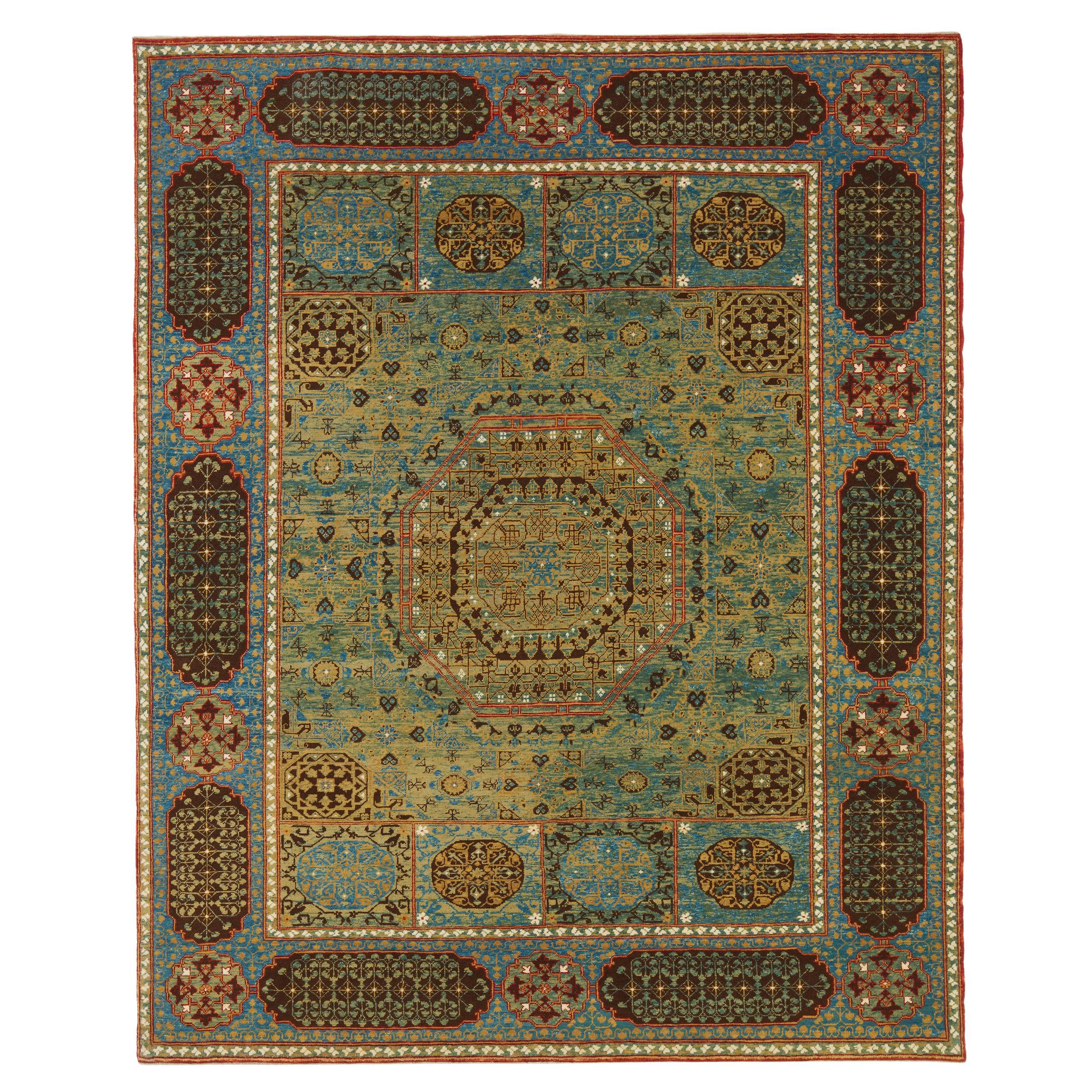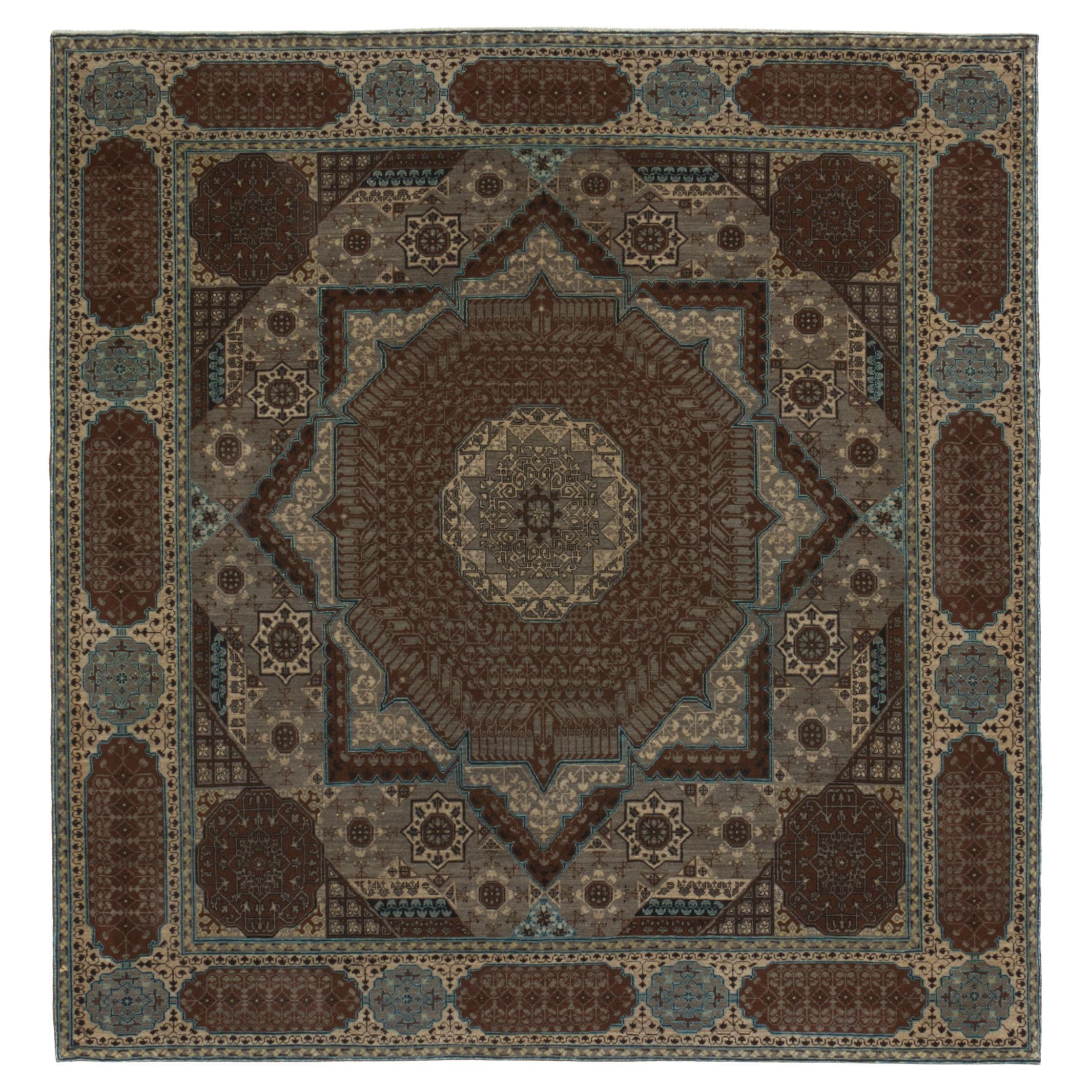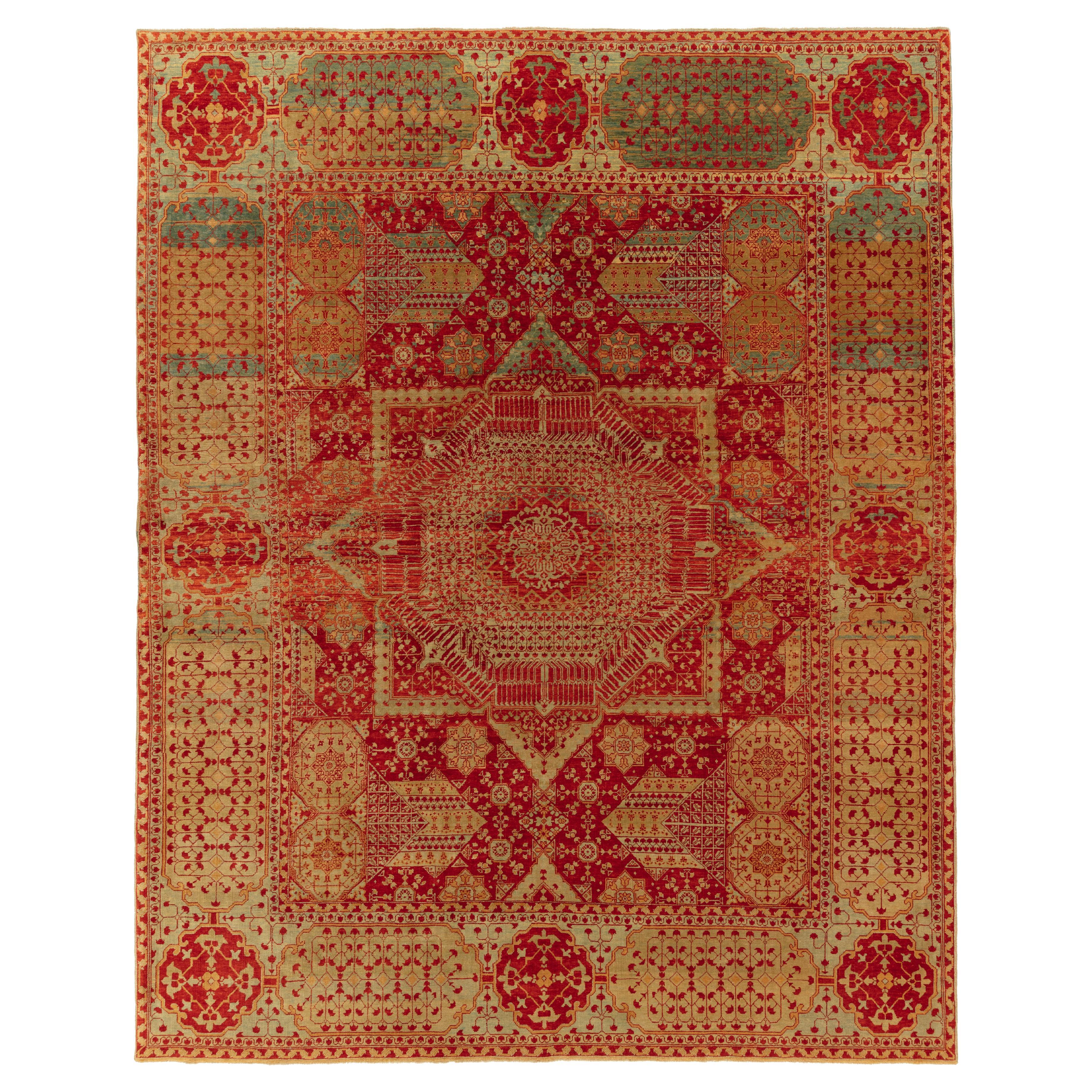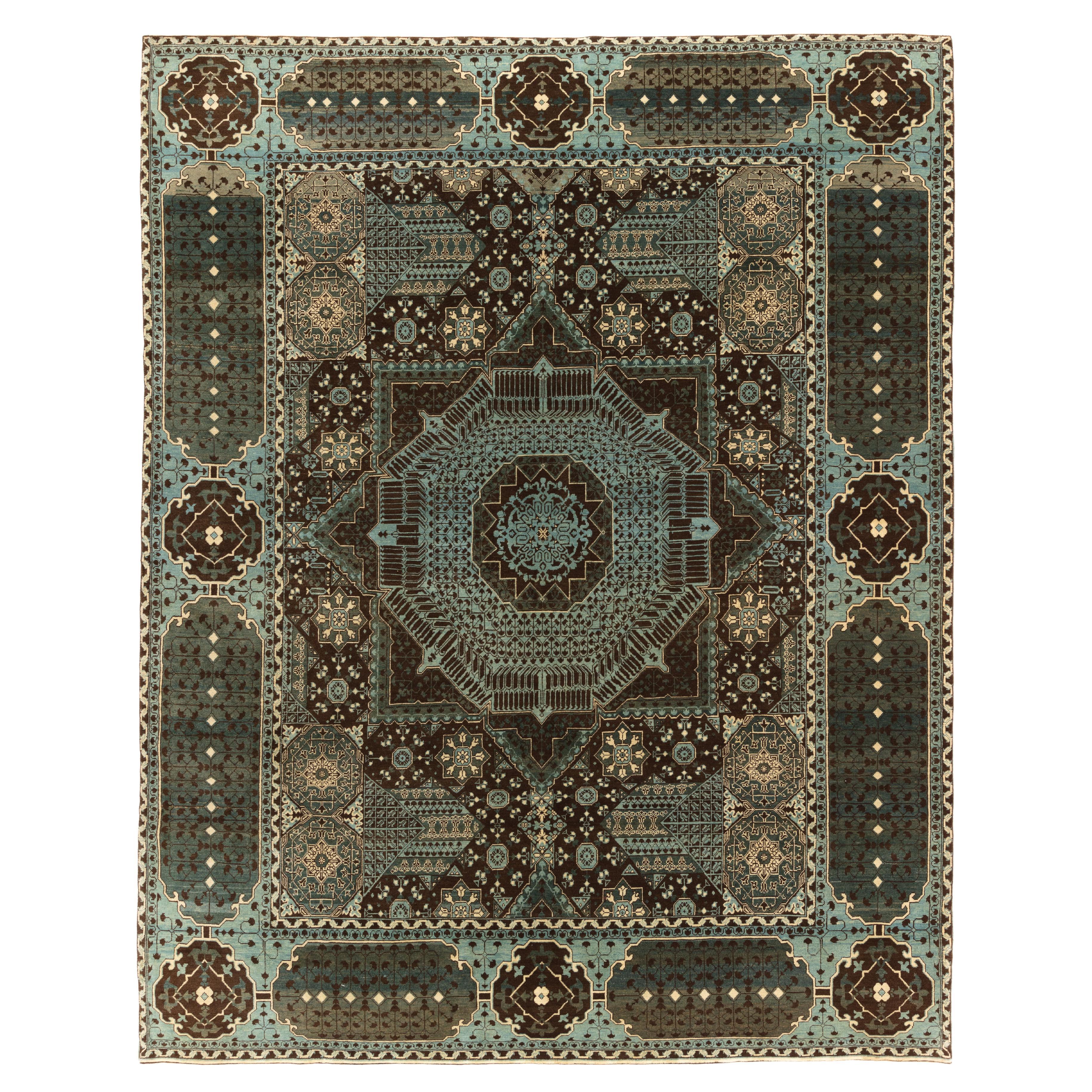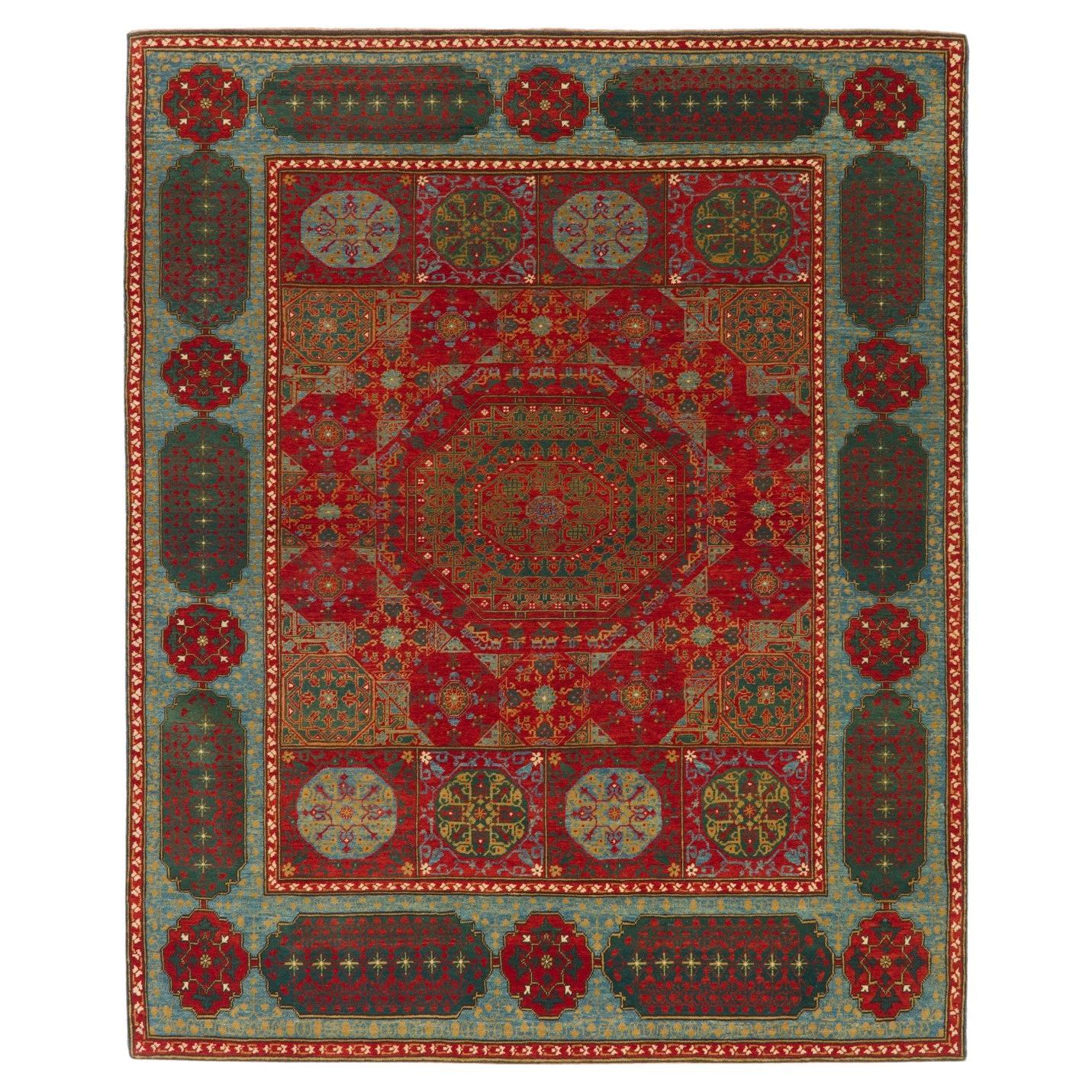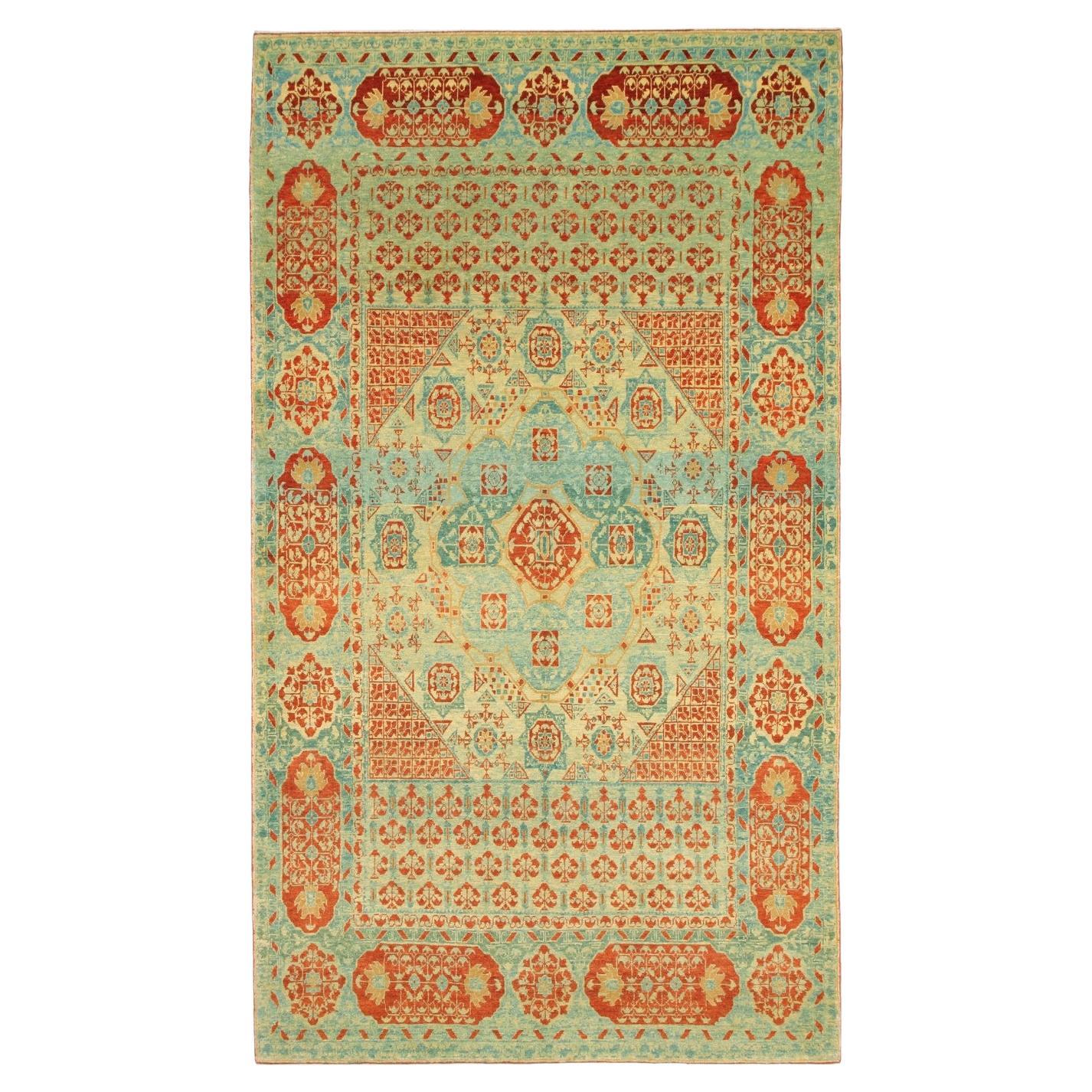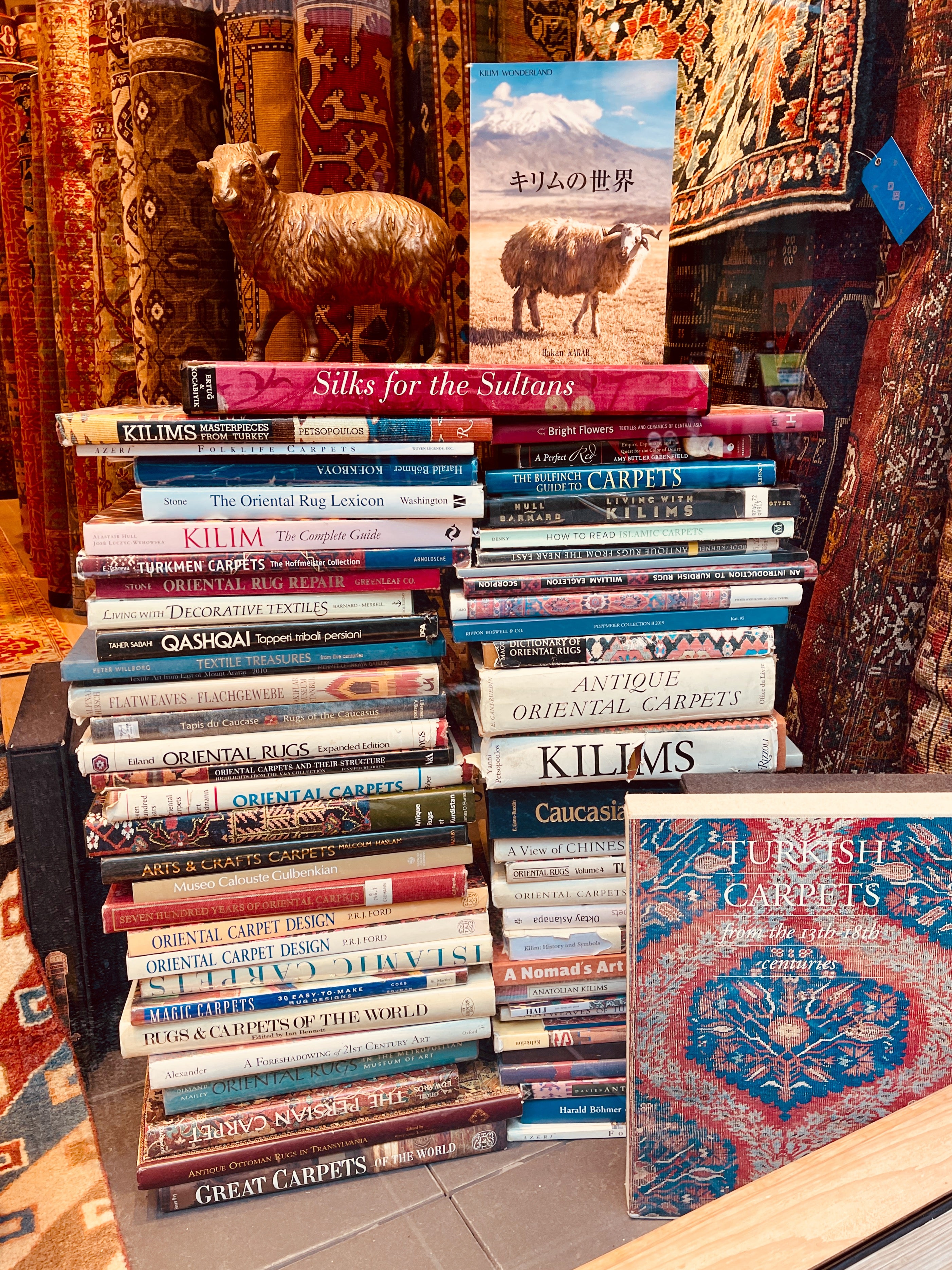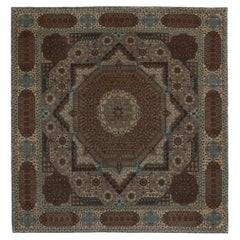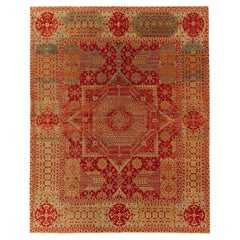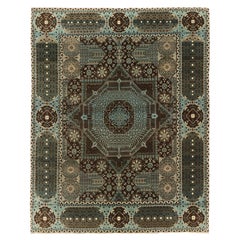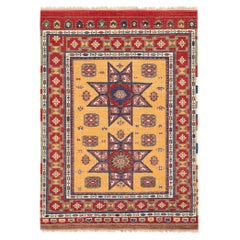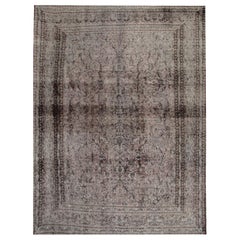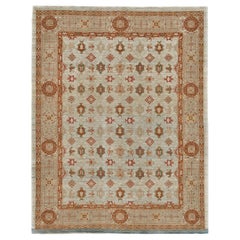Items Similar to Ararat Rugs the Simonetti Mamluk Carpet 16th Century Revival Rug, Natural Dyed
Want more images or videos?
Request additional images or videos from the seller
1 of 5
Ararat Rugs the Simonetti Mamluk Carpet 16th Century Revival Rug, Natural Dyed
About the Item
The source of carpet comes from the book How to Read – Islamic Carpets, Walter B. Denny, The Metropolitan Museum of Art, New York 2014 fig.61,62. The five-star-medallion carpet was designed in the early 16th century by Mamluk Sultane of Cairo, Egypt. It is exhibited at The Metropolitan Museum of Art, New York as The ‘Simonetti’ Carpet. The conventional practice of naming Islamic carpets either after the place they were found (“Nigde Carpet”) or after a previous owner (“Anhalt Carpet”) in this case memorializes the former Italian owner of this magnificent example of fifteenth-century Cairene weaving under the Burji Mamluk dynasty (1382–1517). The Simonetti Carpet is commonly called a “five-color Mamluk carpet” because of its color palette. The materials (most notably S-spun, or clockwise-spun, wool), dyestuffs (a limited range of colors including a purple-red made from the lac insect), and distinctive repertoire of geometric designs are all characteristic of Mamluk carpets from the period. The width, about ninety-four inches (239 cm), is typical for contemporaneous carpets woven in Cairo. A roller-bar loom was used to make the carpet: the unwoven warps were unwound from a rotating cylindrical wood roller at the top of the loom, and the finished carpet was then wound up around a similar roller at the bottom. This method allowed the same loom to be employed to weave both very long and relatively short carpets of the same width. The Simonetti displays three of the geometric medallion designs usually seen in short Mamluk carpets (two of them repeated, combined in A-B-C-B-A sequence) in one very long, impressive work of art.
Mamluk carpets originated in a physical environment that lacked the combination of abundant marginal grazing land and a temperate climate with cool winters that were common to most carpet-weaving areas in the Islamic world. While related to a broader tradition of Turkish weaving centered in Anatolia, far to the north, the designs of these carpets include atypical elements, such as stylized papyrus plants, that are deeply rooted in Egyptian tradition. Their unusual composition and layout probably represent an attempt to develop a distinctive product that could in effect establish a “Mamluk brand” in the lucrative European export market. The uncharacteristic color scheme—devoid of the undyed white pile and employing a limited range of three or five hues in much the same value—also suggests a conscious attempt to create a particular stylistic identity. Also virtually unique in the world of Islamic carpets is the S-spun wool. It has been argued that the tradition of clockwise wool spinning originated in Egypt because of the earlier Egyptian tradition of spinning flax into linen thread. Details of the plant’s botanical structure make it impossible to spin flax fiber in the more common counterclockwise direction utilized throughout the Middle East for wool and cotton.
Mamluk carpets with the color combinations seen in the Simonetti are now generally accepted as part of an earlier tradition that has many links to the weaving of Anatolia, Iran, and Syria. The “three-color” Mamluk carpets, well represented in the Metropolitan’s collection, represent a later development that continued well after the Ottoman conquest of Egypt in 1517. Many such carpets may have been produced well into the seventeenth century, and possibly even later. (Walter B. Denny in [Ekhtiar, Soucek, Canby, and Haidar 2011]). The design of the rug is interpreted by our designers with one central star, and soft colors are used for this rug.
Color summary: 4 colors in total;
Black emerald 441 (Indigo)
Feldgrau 414 (Chamomile – Indigo)
Turquoise 330 (Spurge – Madder Root – Indigo – Walnut Husk)
French bistre 101 (Only specially washed)
Group: Islamic Rugs Family
Area: Mamluk
Material of Pile: Natural dyed hand-spun wool
Material Warp / Weft: Wool on wool
Structure: Symmetrical knot on depressed warp inclining to the right
Knots Density: 39x39
Production Place: Southeastern Anatolia – Diyarbakir
Stock Location: Tokyo
Size (EU): 205 X 285cm
Size (US): 6'8" X 9'4"
Area (EU): 5.8m²
Area (US): 62.9ft²
- Creator:Ararat Rugs (Manufacturer)
- Dimensions:Width: 80.71 in (205 cm)Length: 112.21 in (285 cm)
- Style:Revival (In the Style Of)
- Materials and Techniques:
- Place of Origin:
- Period:
- Date of Manufacture:2021
- Production Type:New & Custom(One of a Kind)
- Estimated Production Time:Available Now
- Condition:
- Seller Location:Tokyo, JP
- Reference Number:1stDibs: LU8206233002412
ARARAT RUGS
We know and believe that the geography we come from, our past, and our lifestyle are the most important bond between us to carry the oriental carpet art and culture to the next generations along with our core values in our ongoing growth journey.
We are aware that the way to achieve this goal and carry this priceless art and culture to the future depends on a lot of work with all our people every day while adhering to our core values.
For us, art is meaningful in the sense that it brings together various cultures around the world. It is an honor for us that oriental carpet art and culture have been instrumental in this for centuries and that we are a part of this business.
We are tirelessly keeping an eye on auction house information around the world about carpets. New York's Metropolitan, London's Victoria & Albert Museums, and other famous art museums, as well as small specialized museums that house private collections, and books about oriental carpets to collect information on outstanding carpet designs and patterns from around the world. It's our Self-improving and Self-developing culture.
As Turkish Culture of Hospitality, the Kurdish Culture of Generosity, and as Japanese Culture of Business Punctuality; are the most important values that this multicultural background has taught and bequeathed to us. It is essential and valuable for us that you feel this feeling not only by looking at our oriental carpets but from the moment you contact us.
About the Seller
5.0
Platinum Seller
These expertly vetted sellers are 1stDibs' most experienced sellers and are rated highest by our customers.
Established in 1970
1stDibs seller since 2023
27 sales on 1stDibs
Typical response time: 1 hour
- ShippingRetrieving quote...Ships From: Tokyo, Japan
- Return PolicyA return for this item may be initiated within 7 days of delivery.
Authenticity Guarantee
In the unlikely event there’s an issue with an item’s authenticity, contact us within 1 year for a full refund. DetailsMoney-Back Guarantee
If your item is not as described, is damaged in transit, or does not arrive, contact us within 7 days for a full refund. Details24-Hour Cancellation
You have a 24-hour grace period in which to reconsider your purchase, with no questions asked.Vetted Professional Sellers
Our world-class sellers must adhere to strict standards for service and quality, maintaining the integrity of our listings.Price-Match Guarantee
If you find that a seller listed the same item for a lower price elsewhere, we’ll match it.Trusted Global Delivery
Our best-in-class carrier network provides specialized shipping options worldwide, including custom delivery.More From This Seller
View AllArarat Rugs the Simonetti Mamluk Carpet 16th Century Revival, Natural Dyed
By Ararat Rugs
Located in Tokyo, JP
The source of carpet comes from the book How to Read – Islamic Carpets, Walter B. Denny, The Metropolitan Museum of Art, New York 2014 fig.61,62. The five-star-medallion carpet was d...
Category
21st Century and Contemporary Turkish Revival Turkish Rugs
Materials
Wool, Organic Material, Natural Fiber
Ararat Rugs the Simonetti Mamluk Carpet 16th Century Revival Rug, Natural Dyed
By Ararat Rugs
Located in Tokyo, JP
The source of carpet comes from the book How to Read – Islamic Carpets, Walter B. Denny, The Metropolitan Museum of Art, New York 2014 fig.61,62. The five-star-medallion carpet was d...
Category
21st Century and Contemporary Turkish Revival Turkish Rugs
Materials
Wool, Natural Fiber, Organic Material
Ararat Rugs the Simonetti Mamluk Carpet 16th Century Revival Rug, Natural Dyed
By Ararat Rugs
Located in Tokyo, JP
The source of carpet comes from the book How to Read – Islamic Carpets, Walter B. Denny, The Metropolitan Museum of Art, New York 2014 fig.61,62. The five-star-medallion carpet was d...
Category
21st Century and Contemporary Turkish Revival Turkish Rugs
Materials
Wool, Natural Fiber, Organic Material
Ararat Rugs the Simonetti Mamluk Carpet 16th Century Revival Rug, Natural Dyed
By Ararat Rugs
Located in Tokyo, JP
The source of carpet comes from the book how to Rread – Islamic Carpets, Walter B. Denny, The Metropolitan Museum of Art, New York 2014 fig.61,62. The five-star-medallion carpet was ...
Category
21st Century and Contemporary Turkish Revival Turkish Rugs
Materials
Wool, Natural Fiber, Organic Material
Ararat Rugs The Simonetti Mamluk Carpet 16th C. Revival Rug, Square Natural Dyed
By Ararat Rugs
Located in Tokyo, JP
The source of carpet comes from the book How to Read - Islamic Carpets, Walter B. Denny, The Metropolitan Museum of Art, New York 2014 fig.61,62. The five-star-medallion carpet was d...
Category
21st Century and Contemporary Turkish Revival Turkish Rugs
Materials
Wool, Natural Fiber, Organic Material
Ararat Rugs The Simonetti Mamluk Carpet 16th C. Revival Rug, Square Natural Dyed
By Ararat Rugs
Located in Tokyo, JP
The source of carpet comes from the book How to Read - Islamic Carpets, Walter B. Denny, The Metropolitan Museum of Art, New York 2014 fig.61,62. The five-star-medallion carpet was d...
Category
21st Century and Contemporary Turkish Revival Turkish Rugs
Materials
Wool, Organic Material, Natural Fiber
You May Also Like
Star Kazak Original 16th Century Style Flatweave Rug by Knots Rugs
Located in London, GB
COLOUR: Original
MATERIAL: 100% Wool
QUALITY: 23 x 39 Persian knot / inch
ORIGIN: Persian knotted rug produced in Afghanistan
RUG SIZE DISPLAYED: 128cm x 191cm
Inspired by an or...
Category
21st Century and Contemporary Afghan Turkish Rugs
Materials
Wool
Vintage Over-Dyed Grey Rug Carpet Oriental Wool Area Rug
Located in Hampshire, GB
This distressed over-dyed rug is one of the best choices as Home decor objects. This grey rug has been distressed and over-dyed to achieve a contemporary, worn piece. This unique pie...
Category
Vintage 1950s Pakistani Revival Turkish Rugs
Materials
Wool, Cotton, Organic Material
$2,266 Sale Price
20% Off
Natural Dye Mamluk Revival Rug
By Mehraban Rugs
Located in WEST HOLLYWOOD, CA
A classic revival of Mamluk rug is phenomenal with traditional style. An oversized rug that has neutral colors of sepia. Medallions and blooming ornaments are symmetrically aligned a...
Category
21st Century and Contemporary Afghan Central Asian Rugs
Materials
Wool
Handmade Turkish Tulu Rug, 100% Natural Un-Dyed Wool, Modern Scandinavian Carpet
Located in Brunswick, ME
100% Natural Hand-Spun Wool of finest quality.
These hand-knotted rugs are produced from scratch in our atelier located in Central Anatolia, famous for being one of the world's olde...
Category
2010s Turkish Tulu Turkish Rugs
Materials
Wool
$975 Sale Price
20% Off
Free Shipping
Doris Leslie Blau Rare 16th Century Cairene Runner
Located in New York, NY
Authentic 16th century Cairene runner
Size: 3'0" × 13'1" (91 × 398 cm)
A 16th century Cairene antique runner, the abrashed dusty rose field with stylized leaves and rosettes overall around a column of cusped medallions with crosses at each end and containing a floral branch within an ivory rosette border.
Woven in Egypt under imperial Ottoman...
Category
Antique 16th Century Egyptian Turkish Rugs
Materials
Wool
Modern Moroccan Rug. 100% Natural Un-Dyed Wool. Custom Hand Knotted Tulu Carpet
Located in Brunswick, ME
100% Natural Hand-Spun Wool of finest quality.
These hand-knotted rugs are produced from scratch in our atelier located in Central Anatolia, famous for being one of the world's olde...
Category
21st Century and Contemporary Moroccan Modern Moroccan and North African...
Materials
Wool
$2,239 Sale Price / item
20% Off
Free Shipping
Recently Viewed
View AllMore Ways To Browse
Egypt Turquoise
Egyptian Turquoise
Insect Display
Islamic Turquoise
Turquoise Ottoman
Egyptian Revival Turquoise
Iran Book
Emerald Metropolitan
Silver Vegetable Dish
Silverware Storage Chest
Small Side Table With Inlaid Wood
Spanish Velvet Chairs
Spindle Side Table
Square Coffee Table Round Corners
Square Mirror Coffee Table
Square Mirrored Coffee Table
St Tropez Furniture
Staved Teak
